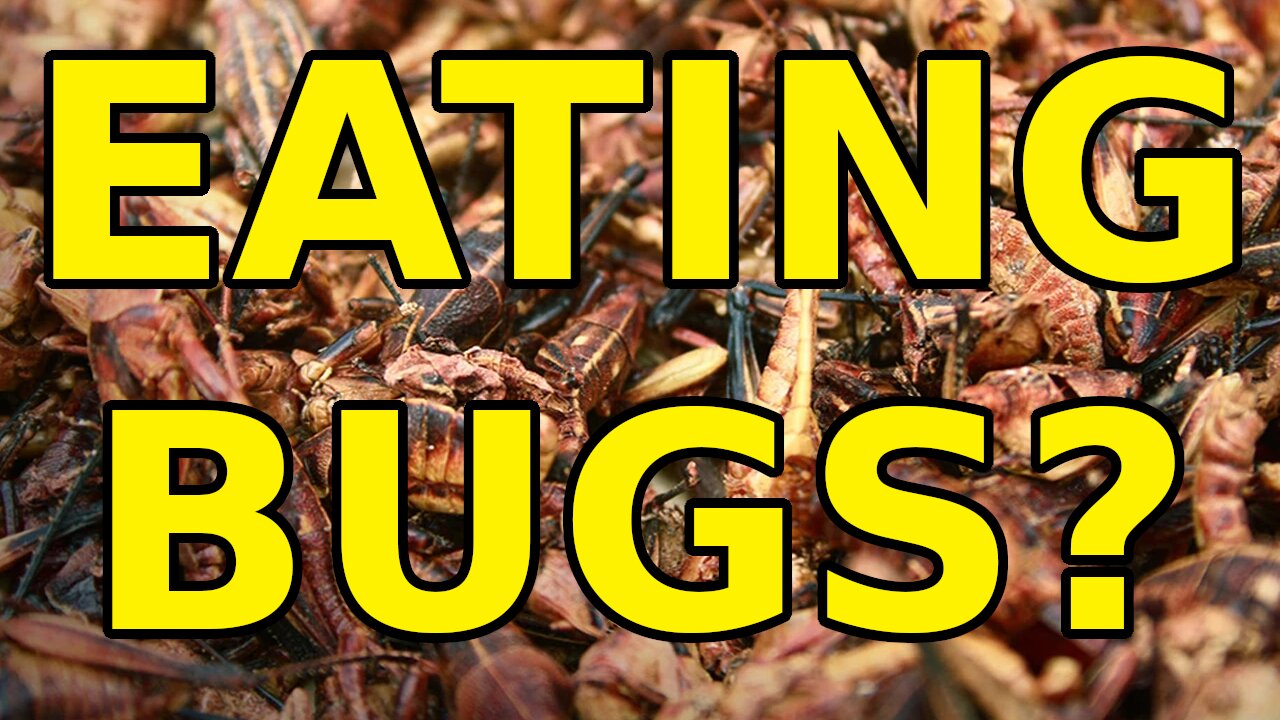Premium Only Content

Why We Won't be Eating Bugs in the Future
Support the Channel:
https://www.subscribestar.com/leather-apron-club
https://www.buymeacoffee.com/leatherapr9
All Social Links: https://bio.link/leatherapronclub
SOURCES CITED:
[1] Huis, Arnold & Van Itterbeeck, Joost & Klunder, Harmke & Mertens, Esther & Halloran, Afton & Muir, Giulia & Vantomme, Paul. (2013). EDIBLE INSECTS future prospects fo food and feed security.
[2] (2006) Livestock's Long Shadow: Environmental Issues and Options. Food and Agriculture Organization of the United Nations (FAO), Rome.
[3] Gerber, P.J., Steinfeld, H., Henderson, B., Mottet, A., Opio, C., Dijkman, J., Falcucci, A. & Tempio, G.
2013. Tackling climate change through livestock – A global assessment of emissions and mitigation
opportunities. Food and Agriculture Organization of the United Nations (FAO), Rome
[4] https://www.epa.gov/ghgemissions/sources-greenhouse-gas-emissions#agriculture
[5] Oonincx DGAB, van Itterbeeck J, Heetkamp MJW, van den Brand H, van Loon JJA, van Huis A (2010) An Exploration on Greenhouse Gas and Ammonia Production by Insect Species Suitable for Animal or Human Consumption. PLoS ONE 5(12): e14445. https://doi.org/10.1371/journal.pone.0014445
[6] https://extension.sdstate.edu/how-much-meat-can-you-expect-fed-steer
[7] Lundy ME, Parrella MP (2015) Crickets Are Not a Free Lunch: Protein Capture from Scalable Organic Side-Streams via High-Density Populations of Acheta domesticus. PLoS ONE 10(4): e0118785. https://doi.org/10.1371/journal.pone.0118785
[8] Oonincx DGAB, de Boer IJM (2012) Environmental Impact of the Production of Mealworms as a Protein Source for Humans – A Life Cycle Assessment. PLoS ONE 7(12): e51145. https://doi.org/10.1371/journal.pone.0051145
FOR FULL SOURCES CITED SEE: https://docs.google.com/document/d/1bPzgYJTl88el6emIgG089fm0qkn75WcVljSML6xzgSI/edit?usp=sharing
FERTILIZER CALCULATIONS:
INSECTS:
In this video by Entomo farms, owner Darrin Goldin says a full harvest of one of their barns produces about 2500lbs of crickets and 2000lbs of frass. [https://www.youtube.com/watch?v=40yXvtq8x8s] @ 5:20
2500lbs of crickets should have 1500lbs of protein in it (assuming 60% protein when dry)
so 1500 lbs of protein for every 2000lbs dry fertilizer, or a 3/4 ratio
COWS:
A beef cow produces about 75lbs of manure a day [https://ag.umass.edu/crops-dairy-livestock-equine/fact-sheets/manure-inventory] (more for dairy cows)
According to the Journal of Dairy Science, about 85% of this manure is water, so they make 11.25lbs of dry weight manure a day.
A cow produces approx. 440lbs of beef, about 25% of which is protein, so 110lbs of protein in a lifetime
according to the USDA, cows are slaughtered at 30-42 months old, assuming 36 months average [https://www.ams.usda.gov/grades-standards/slaughter-cattle-grades-and-standards]
110lbs of protein over 36 months = 3.0555 lbs of protein a month, or about 0.10185185 lbs of protein a day
So in a day, a cow produces 11.25lbs of dry manure a day, and 0.10185185 lbs of protein a day
Comparing these ratios of dry weight manure to protein we get:
COWS: 11.25 / 0.10185185 = 110.45
INSECTS: 4 / 3 = 1.33
VIDEO ATTRIBUTION:
Stock footage provided by Videvo, downloaded from videvo.net
FLATICON ATTRIBUTION: "https://www.flaticon.com/free-icons/co2" title="co2 icons" Co2 icons created by Freepik - Flaticon
-
 6:53
6:53
Leather Apron Club
1 year agoLet's talk about RUSSEL BRAND and his Guests | MEDIA REPRESENTATION WEEK PART 5
1.91K1 -
 LIVE
LIVE
Barry Cunningham
1 hour agoBREAKING NEWS: THE ATTACK ON ELON MUSK AND TESLA DEFINES THE DEMOCRAT PARTY!
754 watching -
 UPCOMING
UPCOMING
pewculture
14 hours agoThe Pew Culture Podcast #15 - Range
32 -
 31:05
31:05
MYLUNCHBREAK CHANNEL PAGE
10 hours agoA.I. Chat GPT Destroys History
20.5K24 -
 DVR
DVR
Jewels Jones Live ®
2 days agoJUDICIAL LAWFARE | A Political Rendezvous - Ep. 115
47.2K27 -
 58:31
58:31
Mike Rowe
19 days agoHonoring A Great Man, Secret Service Agent #9 Clint Hill | The Way I Heard It with Mike Rowe
53.2K102 -
 12:13
12:13
Russell Brand
1 day agoThe Most Dishonest News Reporting You'll Ever See
100K233 -
 39:13
39:13
Rethinking the Dollar
6 hours agoSilver's Flirting With a 12-Year High—Is This the Big Breakout? | Morning Check-In
55.2K15 -
 15:38
15:38
Professor Nez
6 hours ago🚨LBJ Phone Call to Jackie Kennedy is the WEIRDEST THING I've EVER Heard! JFK Files Analysis
52.7K120 -
 1:26:12
1:26:12
Michael Franzese
21 hours agoTrump Dismantles DOE, Musk Saves Astronauts, Tesla Under Attack | LIVE
63.5K60